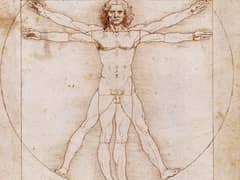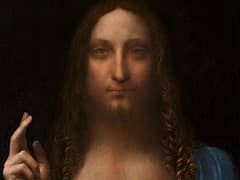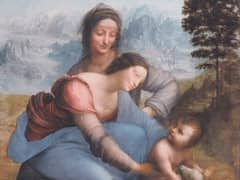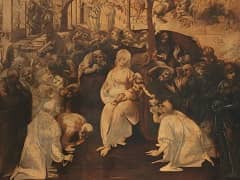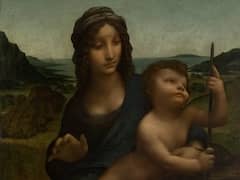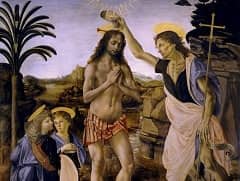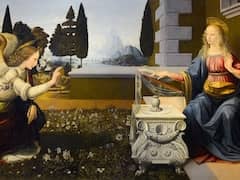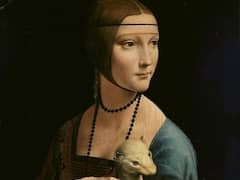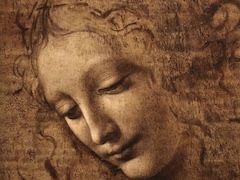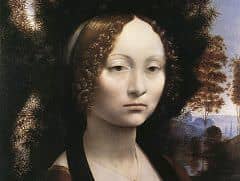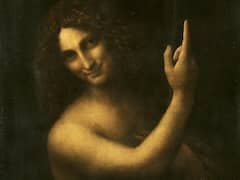10 Secrets of The Last Supper by Leonardo da Vinci
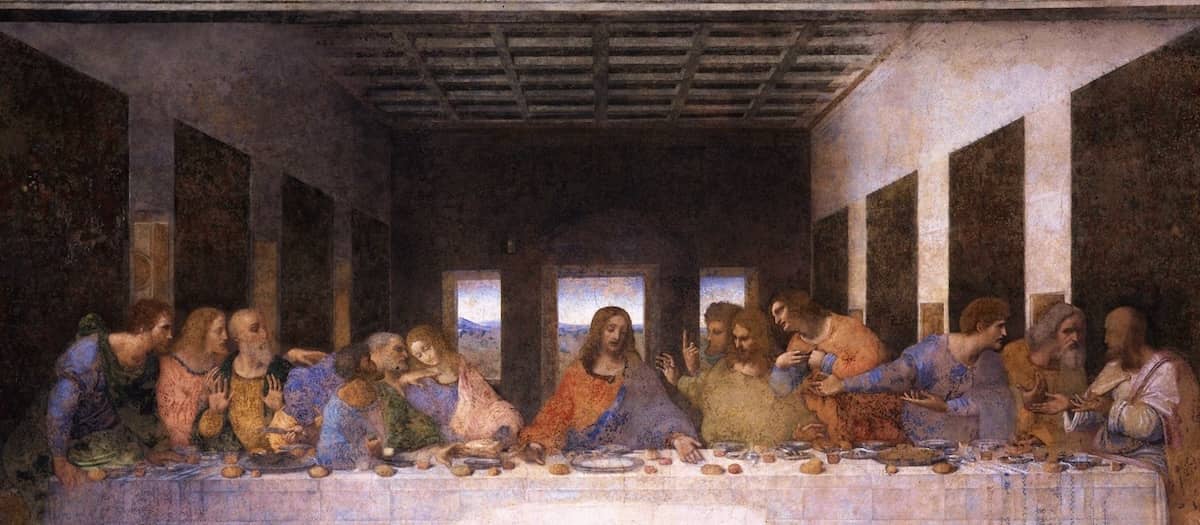
In 1495, Leonardo da Vinci began what would become one of history's most influential works of art - The Last Supper
The Last Supper is Leonardo's visual interpretation of an event chronicled in all four of the Gospels (books in the Christian New Testament). The evening before Christ was betrayed by one of his disciples, he gathered them together to eat, tell them he knew what was coming and wash their feet (a gesture symbolizing that all were equal under the eyes of the Lord). As they ate and drank together, Christ gave the disciples explicit instructions on how to eat and drink in the future, in remembrance of him. It was the first celebration of the Eucharist, a ritual still performed.
Specifically, The Last Supper depicts the next few seconds in this story after Christ dropped the bombshell that one disciple would betray him before sunrise, and all twelve have reacted to the news with different degrees of horror, anger, and shock.
Leonardo hadn't worked on such a large painting and had no experience in the standard mural medium of fresco. The painting was made using experimental pigments directly on the dry plaster wall and unlike frescos, where the pigments are mixed with the wet plaster, it has not stood the test of time well. Even before it was finished there were problems with the paint flaking from the wall and Leonardo had to repair it. Over the years it has crumbled, been vandalized bombed and restored. Today we are probably looking at very little of the original.
Much of the recent interest in the painting has centered on the details hidden within the painting, but in directing attention to these 'hidden' details, most people miss the incredible sense of perspective the work displays. The sharp angling of the walls within the picture, which leads back to the seemingly distant back wall of the room and the windows that show the hills and sky beyond. The type of day shown through these windows adds to the feeling of serenity that rests in the center of the piece, around the figure of Christ.
The Layout of The Last Supper
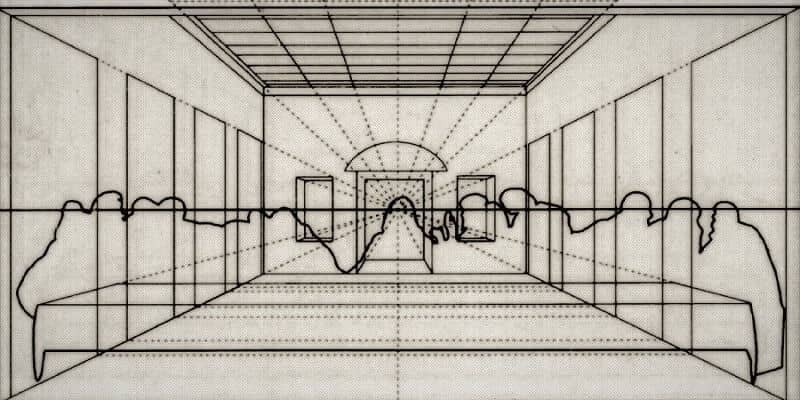
Leonardo balanced the perspective construction of the Last Supper so that its vanishing point is immediately behind Christ's right temple, pointing to the physical location of the center, or sensus communis, of his brain. By pulling a string in radial directions from this point, he marked the table ends, floor lines, and orthogonal edges of the six ceiling coffer columns. From the right and/or left edge of the horizon line, he drew diagonal lines up to the coffer corners, locating points for the horizontal lines of the 12 coffer rows.
Leonardo was well known for his love of symmetry. In his Last Supper, the layout is largely horizontal. The large table is seen in the foreground of the image with all of the figures behind it. The painting is largely symmetrical with the same number of figures on either side of Jesus. The above diagram shows how the perspective the Last Super was worked out with a series of marks at key points highlighting the architectural aspects of the composition and positioning of the figures.
10 Facts You Might not Know about the Masterpiece
1. Who's who in "The Last Supper"
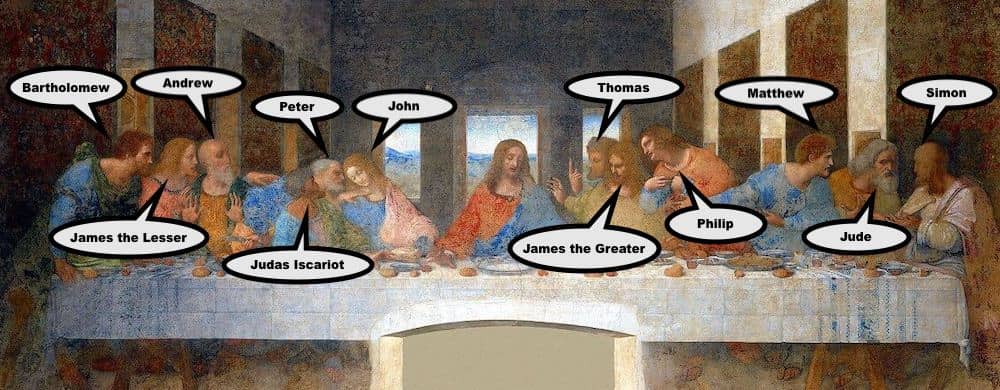
2. The secret of "The Last Supper"
The Last Supper is a very popular religious scene painted by many celebrated artists. Unlike artists before and after him, Leonardo da Vinci chose not to put halos on Jusus Christ. Many art historians believe that Leonardo da Vinci believe in nature, not in God. To Leonardo, nature is God, so he treated every character in the fresco as common people.
3. "Last Supper" is a failed experiment.
Unlike traditional frescoes, which Renaissance masters painted on wet plaster walls, Leonardo experimented with tempura paint on a dry, sealed plaster wall in the Santa Maria delle Grazie monastery in Milan, Italy. The experiment proved unsuccessful, however, because the paint did not adhere properly and began to flake away only a few decades after the work was finished.
4. The spilled salt is symbolic.
Speculations about symbolism in the artwork are plentiful. For example, many scholars have discussed the meaning of the spilled salt container near Judas's elbow. Spilled salt could symbolize bad luck, loss, religion, or Jesus as salt of the earth.
5. Eel or herring?
Scholars have also remarked on da Vinci's choice of food. They dispute whether the fish on the table is herring or eel since each carries its own symbolic meaning. In Italian, the word for eel is "aringa." The similar word, "arringa," means to indoctrinate. In northern Italian dialect, the word for herring is "renga," which also describes someone who denies religion. This would fit with Jesus' biblical prediction that his apostle Peter would deny knowing him.
6. Da Vinci used a hammer and nail to help him to achieve the one-point perspective.
What makes the masterpiece so striking is the perspective from which it's painted, which seems to invite the viewer to step right into the dramatic scene. To achieve this illusion, da Vinci hammered a nail into the wall, then tied string to it to make marks that helped guide his hand in creating the painting's angles.
7. The existing mural is not 100% da Vinci's work.
At the end of the 20th century, restorer Panin Brambilla Barcilon and his crew relied on microscopic photographs, core samples, infrared reflectoscopy and sonar to remove the added layers of paint and restore the original as accurately as possible. Critics maintain that only a fraction of the painting that exists today is the work of Leonardo da Vinci.
8. Three early copies of the original exist.
Three of da Vinci's students, including Giampietrino, made copies of his painting early in the 16th century. Giampietrino did a full-scale copy that is now in London's Royal Academy of Arts. This oil painting on canvas was the primary resource for the latest restoration of the work. The second copy by Andrea Solari is in the Leonardo da Vinci Museum in Belgium while the third copy by Cesare da Sesto is in the Church of Saint Ambrogio in Switzerland.
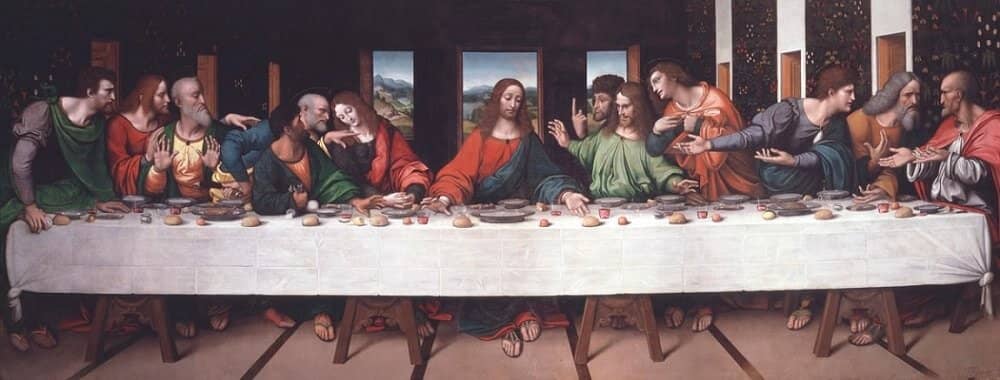
9. The painting is also a musical score.
According to Italian musician Giovanni Maria Pala, da Vinci incorporated musical notes in "The Last Supper." In 2007, Pala created a 40-second melody from the notes that were allegedly hidden in the scene.
10. The painting has been a victim of neglect and abuse.
In 1652, monastery residents cut a new door in the wall of the deteriorating painting, which removed a chunk of the artwork showing the feet of Jesus. Late in the 18th century, Napoleon Bonaparte's soldiers turned the area into a stable and further damaged the wall with projectiles. During World War II, the Nazis bombed the monastery, reducing surrounding walls to rubble.



